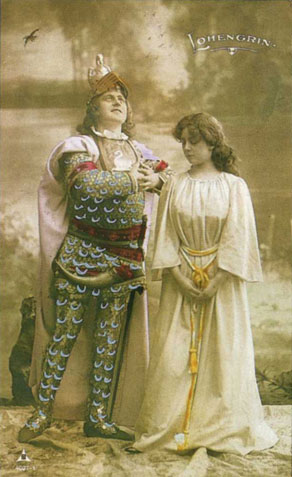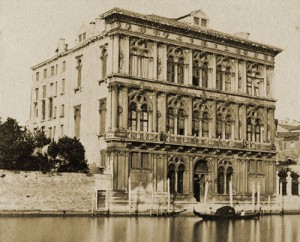As he grew older, one thing still frustrated Wagner: his need to find a permanent theatre in which he could produce his operas. Eventually he settled in Bayreuth, a small provincial town midway between Berlin and Munich and in spite of many problems, somehow he managed to raise the money and put on the festival which was successful enough to become a regular fixture even to this day.
 Although he suffered several heart attacks, Wagner did live to see his dream come true, that is to say a performance of his cycle: the Ring of the Nibelungen exactly as he had conceived it between the 13th and the 30th of August 1876.
Although he suffered several heart attacks, Wagner did live to see his dream come true, that is to say a performance of his cycle: the Ring of the Nibelungen exactly as he had conceived it between the 13th and the 30th of August 1876.
He completed his last opera: Parsifal in Palermo in January 1882. The legend of Parsifal was also the background for one of Wagner’s earlier works, Lohengrin (left). The libretto for this work draws on a number of other medieval Teutonic legends centred around around the Knights of the Holy Grail. A second Bayreuth Festival was held for Parsifal but by this time. Wagner was extremely ill, having suffered through a series of increasingly severe angina attacks. Incredibly, during the sixteenth and final performance of Parsifal on 29th August, he secretly entered the pit during Act III, took the baton from conductor Hermann Levi, and led the performance to its conclusion.
 Wagner moved with his family to Ca’ Vendramin Calergi – a C16th palazzo on the Grand Canal in Venice (right) on the 14th of September 1882 intending to write some one movement symphonies but whilst working at his desk on the 13th of February 1883, he had a final fatal heart attack. His body was returned to Bayreuth and he was buried with great ceremony at Wahnfried, his house in Bayreuth where his festival was established and which still endures today – a testament to his single-minded genius and determination.
Wagner moved with his family to Ca’ Vendramin Calergi – a C16th palazzo on the Grand Canal in Venice (right) on the 14th of September 1882 intending to write some one movement symphonies but whilst working at his desk on the 13th of February 1883, he had a final fatal heart attack. His body was returned to Bayreuth and he was buried with great ceremony at Wahnfried, his house in Bayreuth where his festival was established and which still endures today – a testament to his single-minded genius and determination.